A Grammy-nominated New Orleans Trumpet Player Talks Mardi Gras, and What Music Means to the Crescent City
Trumpet player Branden Lewis tells Travel + Leisure what Mardi Gras is really about.
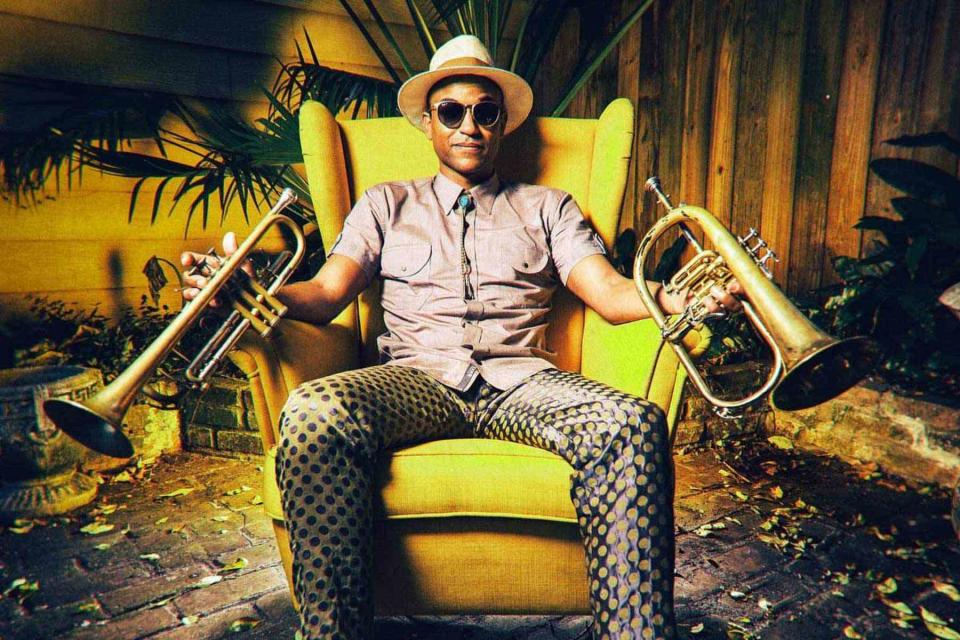
Giles Clement
When he moved to New Orleans at 24, Branden Lewis felt as if he’d found his true identity. The Grammy-nominated trumpet player and Preservation Hall Jazz Band member plays weekly at the Chandelier Bar at the Four Seasons Hotel New Orleans. Back in the 1950s, his grandfather played tenor sax for the New Orleans’ R&B band Li’l Millet and His Creoles, and even though Lewis grew up in Los Angeles, his family maintained deep ties to the Crescent City.
“Being Creole and being from New Orleans has always been a huge part of my family’s identity,” he says. “Growing up, I heard stories about New Orleans, but I never visited until I came here to see if I could make a living playing music. There’s a strong sense of belonging and community here, especially for a musician coming to one of the greatest musical cities in the world.”
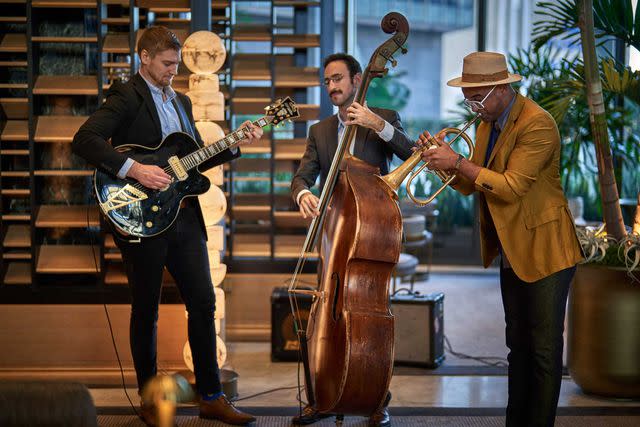
Courtesy of The Four Seasons

Richard T. Nowitz/Getty Images
Music is New Orleans’ beating heart. It drifts on the air from bars, cafés, clubs, and sidewalks, and it’s impossible to separate the city from its melodies. New Orleans has gathered influences from its European colonial days, as well as the sounds of Africa, the Caribbean, and Native American songscapes. Brass band and second-line music, along with jazz, R&B, zydeco, and bounce, have all added to the wealth of the city’s culture. New Orleans has produced a long list of musical giants — from Louis Armstrong to Allen Toussaint, Dr. John to Trombone Shorty, and Kermit Ruffins to Big Freedia.
“In New Orleans, we bring musical celebration to nearly every part of life, even funerals,” Lewis says. “From a community standpoint, it’s important because that gives even more work to musicians. From an artistic standpoint, I think it’s beautiful that music is part of the community on the good days as well as the bad days. In those moments of playing in a second-line band for a funeral, I feel like I’m living my truest purpose — the moment is about something greater than just me, and we’re channeling the energy to make that moment as powerful as it can be.”
In New Orleans each year, Carnival season begins on Jan. 6 (Twelfth Night), the day that marks the end of the Christmas season and starts the long march toward Lent. From there, activities ramp up to a frenzied pace the two weeks leading up to Mardi Gras (“Fat Tuesday” in French) — always the Tuesday 47 days before Easter and one day before Ash Wednesday. (In 2023, Mardi Gras is on Feb. 21.)
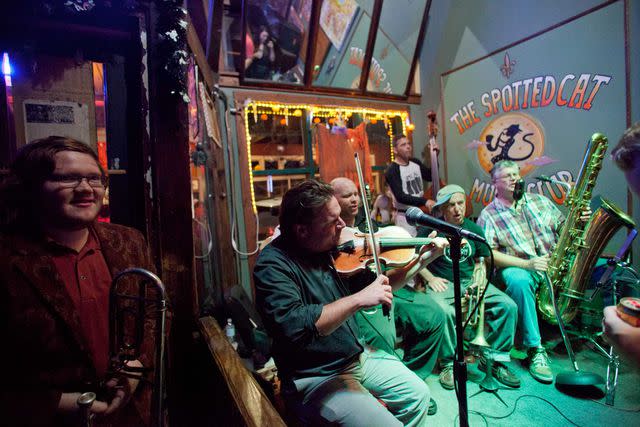
Phil Clarke Hill/Getty Images
Like many Christian holidays, Mardi Gras has roots in pagan rituals marking the seasons — in this case, the end of winter and the beginning of spring. Mardi Gras has been celebrated in New Orleans since the city’s inception in the late 17th century. It became a larger celebration after the Civil War, when large group gatherings became more prevalent.
Mardi Gras Indians began masking as early as the mid-19th century, in costumes inspired by Native American designs. Their suits — dripping with feathers, sequins, faux gemstones, pearls, cowrie shells, velvet, satin, and other materials — take the better part of a year to construct by hand and can weigh up to 150 pounds and cost thousands of dollars. Their call-and-response music, backed by percussion, celebrates acts of bravery and defiance and has become an essential part of Mardi Gras tradition.
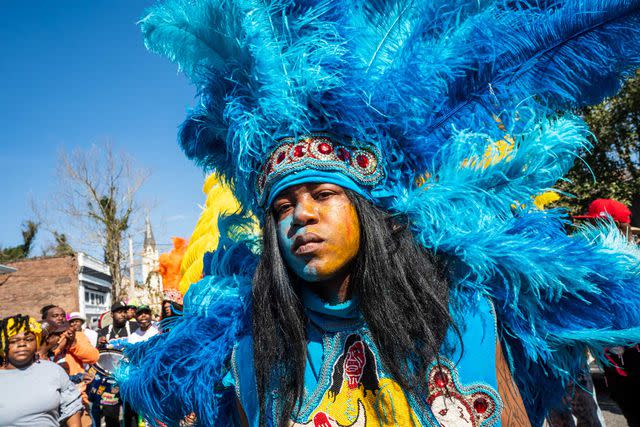
Erika Goldring/Getty Images
“In New Orleans, there’s music you hear throughout the year, and then there are particular Mardi Gras songs,” Lewis says. “They encapsulate the ritual for Carnival every year. First thing on Mardi Gras morning, I put on Professor Longhair’s ‘Go to the Mardi Gras.’ Next, I head out to see the Zulu parade. And finally, I make my way over to the Bywater for St. Anne’s, which is the parade I play in nearly every year. They carry the ashes of people who have passed during the year and release them into the Mississippi River. There’s one perfect moment during that parade — when the second line plays the triumphal march from the opera, ‘Aida’ (known locally as ‘Aida’s Theme’), turns from Royal Street onto Esplanade, and leaves the French Quarter. The energy of the entire city is peaking, and it feels like the moment of Mardi Gras to me.”
Like Lewis, people have very specific traditions for how they interact with the music on Mardi Gras. It’s more an opportunity to “Do Whatcha Wanna” (a Rebirth Brass Band song that is extremely popular at Mardi Gras time) and let your spirit take you where you feel like going than to make specific plans that have anything to do with a clock. Those who heed the oft-quoted Carnival advice that the season is a marathon and not a sprint have the flexibility to take advantage of stored energy and get up early to see how a Skull & Bones gang or Mardi Gras Indians celebrate, or sleep in and hit the parades and parties when they’re ready.
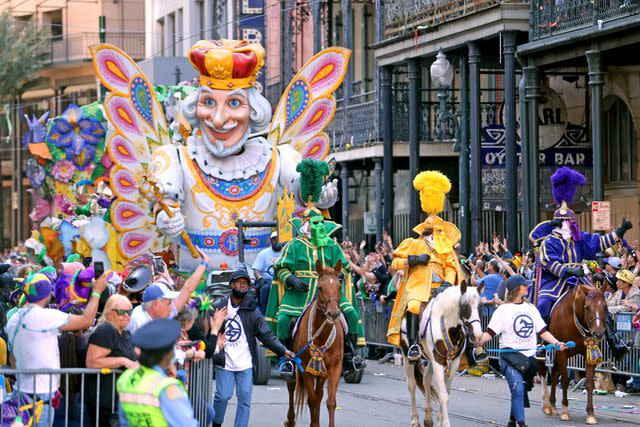
Michael DeMocker/Getty Images
While some may cap a day of parades with a night bouncing between music venues, it’s a different feel than during festival season, like Jazz Fest, when musicians flock to New Orleans for their festival gigs. After the Jazz Fest day, music goes until dawn and there are all-star lineups that you would never see otherwise. (Some of Lewis’ favorite spots are the Maple Leaf Bar and clubs on Frenchmen Street, like The Blue Nile, Apple Barrel Bar, d.b.a., Snug Harbor Jazz Bistro, and The Spotted Cat Music Club.)
“Some folks go to the marching band battles under the bridge at St. Charles or on Napoleon Street at the beginning of the parade route,” Lewis says. “The marching bands are what draw me to Carnival parades. Due to the nature of the season’s revelry, the music at venues is lagniappe (something extra) to the main scene: what’s going on in the streets. That’s where it’s all happening.”
For more Travel & Leisure news, make sure to sign up for our newsletter!
Read the original article on Travel & Leisure.

